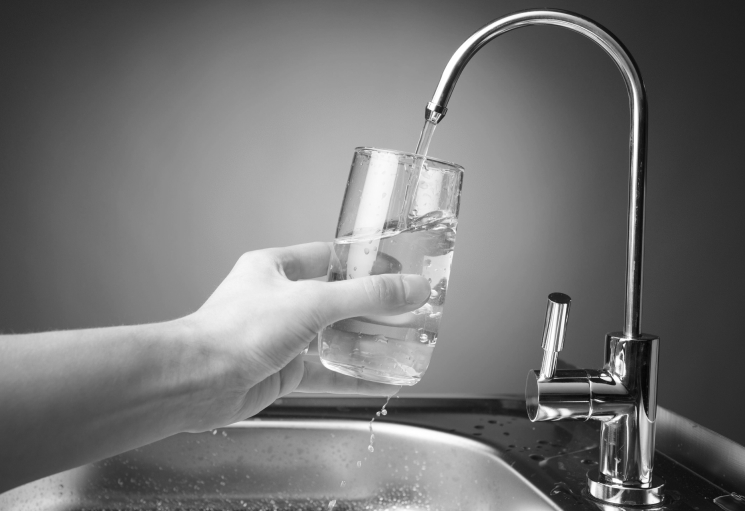
Many homeowners install point-of-use Reverse Osmosis systems at their kitchen sinks to provide clean, purified drinking water for their families. However, whole-home RO systems can be used to provide the same purified water to every tap in your home. A whole-home RO, also known as a point-of-entry system, is typically installed in your utility room, in line with your other water treatment equipment.
How Does a Whole-Home RO work?
Much like a point-of-use RO, a whole-home RO works to reduce chemicals and contaminants found in source water by forcing water through a series of filters and a reverse osmosis membrane. The purified water is then stored in a large tank, ready for when your family needs it. When there has been sufficient demand for water, the RO system is automatically activated and begins to create a new supply of purified water to re-fill the storage tank.
When Should a Whole-Home RO be Installed?
Whole-home RO systems are best suited for homes where the source water has high levels of arsenic, chromium, uranium, nitrates, sodium, or total dissolved solids. A whole-home RO system will provide purified water at every tap in your home.
Pros and Cons of a Whole Home RO
As with everything, there are pros and cons to be considered when thinking about installing a whole-home RO.
On the pro side, a whole-home RO provides Reverse Osmosis water at every tap in your home. This means that if you drink a glass of water from the bathroom, you are getting the same purified water as you would in your kitchen. With every drop of water being treated, you can be confident that the water you brush your teeth with, bathe or shower in, or do your laundry with is clean, purified water.
The major con of a whole-home RO is the additional water required. When RO water is created by pushing water through the membrane, the resulting purified water is pushed to a storage tank, while waste water contaminants are flushed down the drain. Dependant on your families’ water demand, you may see an increase in your water usage due to this “waste water”.
Other Considerations
The membranes used in a Reverse Osmosis system are great at reducing a whole host of chemicals and contaminants, but without adequate pre-treatment the membranes can easily foul, decreasing the systems efficiency, increasing maintenance costs and shortening the membrane’s life. For this reason, certain contaminants must be pre-treated before the water touches the RO membrane. The most problematic contaminants that can foul an RO membrane are chlorine, iron, manganese, hydrogen sulphide gas, and hard water. Most of these can be taken care of with a water softener or filtration unit.
While a whole-home Reverse Osmosis system might not be right for all homes, in the right situation, and with the correct pre-treatment, they can provide years of clean, purified water for your family. The first step in determining if a whole-home RO is the right solution for you is to have your water tested and to determine your family’s water usage by a Water Treatment Expert.
Water Depot
Did you find the information in this article useful? Water Depot are your local water treatment experts, carrying a large selection of water treatment products. Click here to get your free water test.






